Ever wonder what terms like “Double Ought Buckshot” and “12 gauge” really mean? You’re in the right place because in this article we’re going to demystify those terms and talk about shotgun shell sizes.
The shotgun is a versatile weapon that can operate using two types of ammunition. But, the variety of that ammo might be confusing, especially if you’re new to shotguns.
Never fear, because we’re going to help you understand everything you need to know about shotgun ammunition.
Ready to learn? Let’s get started.
Table Of Contents
What is a Shotgun Shell?
A shotgun shell is “a self-contained cartridge typically loaded with multiple metallic ‘shot’, which are small, generally spherical projectiles.” Shotguns are also capable of firing a single projectile, called a ‘slug’.
A shotgun shell is cased in plastic with a brass base containing the primer.
Starting at the brass, the layers of a shotgun shell are brass, propellant, over-powder wad, shot wad, shot pellets (or slug), over-shot wad, and top crimping.
The brass base of the shell is thick enough to hold the primer, which is longer than those used for rifle and pistol ammunition.
Shotgun Shell Terminology
Okay, we threw a bunch of unfamiliar terms at you in the above description of a shotgun shell. Don’t worry, we’ll define each of them for you so you’ll have a better understanding of shotgun shells and how all the parts work together.
- Bore–the interior diameter of a tube or cylinder, in this case, the inside of the shotgun barrel.
- Shot–the pellets inside some shotgun pellets. These range in size and number according to their usage.
- Wadding or Wad–this prevents the shot and powder from mixing and provides a seal to keep gas from blowing through the shot instead of pushing it forward.
- Slug–a single projectile round in a shotgun shell, used for hunting larger game.
- Sabot–a plastic shell around some shotgun shells, which gives the projectile a degree of spin as it leaves the barrel.
- Rifling–spiral-like casts on the inside of some shotgun barrels, these are paired with saboted slugs to increase the slug’s rotation as it leaves the barrel. Handgun barrels are also rifled.
- Brass–the part of the shotshell containing the primer.
What Does Shotgun GAUGE Mean?
The gauge of a shotgun is an old term that refers to the barrel diameter. The gauge number is equal to the number of lead pellets of that diameter that add up to a weight of 1 pound. The most common gauge in use in the U.S. is the 12 gauge, but there are also 28, 20, 16, and 10 gauges.
10 and 16-gauge shotshells are rare, though they’re still being manufactured.
Shotguns using 11, 15, 18, 2, and 3 gauge shells are the rarest of all the shotguns, and shotshells for these are no longer manufactured. Owners of these firearms usually have a specialist hand load the shells.
What Gauge is a 410 Shotgun?
The .410 round is not a gauge; instead, it is measured in caliber, though the weapon that fires it is still a shotgun. But, the .410 shotshell is still encased in a plastic shell, just like other shotshells.
What does SHOT mean?
Together, all the pellets in a shotgun shell are called the shot. These projectiles are usually made of lead, but can also be lead-coated steel, tungsten, or bismuth. Shot sizes are measured with numbers starting with the smallest, which is ‘birdshot’. “Shot” is not really the number referred to when talking about shotgun shell sizes.
Eventually, the numbers change to letters until you reach the largest, which is called ‘buckshot’, a popular large-game round.
Main Shot Types:
- Pest: The lightest shot size is called ‘Dust’ and is used for pests. #12, #11, and #10 shot is also used for pests.
- Birds/Skeet: #9 ½ to #7 ½ is used for birds or clay targets (called skeet).
- Birds: #7 to #1 and B through BBB are used for birds.
- Waterfowl: T, TT, TTT (or F), and FF are used for waterfowl.
- Deer/Larger Game: Buckshot is #4 through #1 ½ and 0 to 0000. 00 is often shortened to ‘double-aught’ and 000 is sometimes called a ‘triple-aught’ shot.
Shotgun Shell Sizes Chart
| Shell | Gauge | Load | |
|---|---|---|---|
| Pheasants | 2 3/4 inch | 12 gauge | 1 1/4 ounces of No. 6 shot (lead), 1,300 fps 1 1/8 ounces of No. 3 shot (steel), 1,500 fps |
| Ducks | 3 inch | 12 gauge | 1 1/4 ounces of No. 2 shot (steel), 1,450 fps |
| Geese | 3 inch | 12 gauge | 1 1/2 ounces of No. 4 HEVI-Shot (tungsten-iron), 1,400 fps |
| Turkeys | 3 inch 3 inch | 12 gauge 20 gauge | 1 3/4 ounces of No. 6 HEVI-Shot (tungsten-iron) 1 1/4 - 1 1/2 ounces of No. 6 Heavyweight or HEVI-Shot (tungsten-iron), 1,100 fps |
| Doves | 2 3/4 inch 2 3/4 inch 2 3/4 inch | 12 gauge 12 gauge 20 gauge | 1 ounce of No. 7 shoot (steel), 1,300 fps 1 1/8 ounces of No. 7 1/2 or No. 8 shot (lead), 1,180 fps 7/8 ounce of No. 8 shot (lead), 1,200 fps |
| Quail | 2 3/4 inch | 20 gauge | 7/8 ounce of No. 8 shot (lead), 1,200 fps |
| Ruffed Grouse | 2 3/4 inch | 20 gauge | 7/8 ounce of No. 7 1/2 shot (lead), 1,200 fps |
| Woodcock | 2 3/4 inch | 28 gauge | 3/4 ounce of No. 8 shot (lead), 1,200 fps |
| Deer (Rifled Barrel) | 2 3/4 inch | 20 gauge | Sabot slug with premium bullet, 1,500-1,600 fps |
| Deer (Smoothbore) | 2 3/4 inch | 12 gauge | 1-ounce slug wad attached, 1,600 fps |
| Practice | 2 3/4 inch | 12 gauge reloads | 7/8 ounce of No. 8 1/2 shot (lead), 1,200 fps |
For the shotgun hunters out there, the above chart should give you a sense of the different cartridge types used for hunting various game.
Now before my inbox fills up with angry emails, let me say that these rules are not set in stone. You’re free to hunt any game with any cartridge, permitting your local and state laws.
That said, the above is a good rule of thumb that you can reference any time you’re preparing for a hunt.
Shotgun Slugs
Before we look at all the different types of shotgun slugs, let’s quickly compare how the cartridges look on the inside to gain some perspective:
As you can see, the lower half of the cartridges are fairly similar between birdshot, buckshot, and slugs (though slug cartridges may have a bit more power).
The difference is in the projectile itself.
Full-bore Slugs: 5 Major Types
These are single projectile shotgun rounds used for hunting larger game animals. There are a lot of different types of the slug.
Some shotguns have a slight rifling of the barrel, while other shotguns have no rifling and are referred to as smoothbore. Saboted slugs are designed for barrel rifling and use a shuttlecock method to keep them stable.
1. BRENNEKE SLUGS
This is a solid lead slug with ribbing on the outside. These ribs allow a small amount of rotation as the slug moves down the barrel. They also reduce friction in the barrel, increasing the slug’s velocity. This slug is solid and provides deep penetration.
2. FOSTER SLUGS
The Foster slug is intended to be fired through a non-rifled shotgun barrel. It has a deep hollow in the rear of the slug, like that in the back of an airgun pellet. They also have ribbing down the sides to give the slug a slight rotation and improve precision.
These slugs are roll-crimped at the end, making them impossible to hand reload without the use of special tools.
3. SABOTED SLUGS
These slugs are smaller than the bore or diameter of the shotgun and are wrapped in a plastic ‘sabot’. This sabot is designed to engage with the rifling in the shotgun barrel and give a ballistic spin to the projectile.
Because the sabot prevents the slug from touching the bore, the projectile can be made from lead, copper, brass, or steel. They vary in shape but are usually bullet-shaped.
The sabot keeps the projectile in the center of the bore as it rotates, and peels away from the slug once it leaves the barrel. This offer increased accuracy.
4. WAD SLUGS
These are modern variations between the Foster and saboted slugs. Wad slugs are also sometimes called ‘drive key’ or ‘key’ slugs.
It’s designed to fire through a smooth bore and is shaped more like a bullet with a smooth outer surface. A wad slug is loaded using a standard shotshell wad, which prevents lead fouling even when fired through a rifled barrel.
Wad slugs have accuracy at a distance range of about 75 yards (70 meters), which puts them in the same category as the Foster slug.
Traditional sabots can be accurate at greater distances. Wad slugs are also crimped with a fold at the end, making them easier to hand reload using a press without specialized tools.
5. PLUMBATA SLUGS
This slug has a plastic stabilizer as part of the slug. It might be either stuck into a cavity at the bottom of the projectile or over the slug in external notches.
With the stabilizer in the rear of the slug, discarding sabots can be included. In the second type of Plumbata slug, the stabilizer itself acts as a sabot but remains part of the slug until impact (Impact Discarding Sabot).
Shotgun Shell Length
Shotshells come in a variety of lengths. When you think of shotgun shell sizes, most people think of the length. This is important to keep in mind because firing a shell longer than a shotgun’s chamber can be dangerous, even if it’s the correct gauge.
What Lengths to Shotgun Shells Come In?
Modern 12-gauge shotshells come in 2 ½-, 2 ¾-, 3-, and 3 ½-inch lengths, all holding different amounts of powder. Shotguns are marked on the barrel, for example, 12-gauge 2 ¾ inches. So for this shotgun, its maximum shell length is 2 ¾ inches.
It’s also important to point out that you should never fire a gauge different than that of your shotgun. This can destroy a gun and lead to serious injury to both the shooter and any innocent bystanders.
Always check the shell and the shotgun for compatibility.
High and Low Shotgun Brass
There is a myth that shotgun shells have different sizes of brass. So-called ‘high brass’ shells are thought to contain more powder, making them more powerful. This may have been true at one point in the history of shotguns, but not anymore.
When purchasing shotgun ammo, just ignore the brass length.
Shotgun Shell Sizes – Conclusion
If you’re new to shotgun ownership, the variety of ammunition available is probably confusing.
It’s important to remember never to use shotgun shells in a different gauge as your shotgun because this is extremely dangerous.
Your choice of shotgun shell sizes will depend on many factors, including what type of hunting or shooting you plan to do.
Armed with your new knowledge, your next stop at the ammo store is going to be one heck of a good time!
Did I forget any shotgun ammo terms? Please let me know in the comments below.
Feature Image – Photo by Joakim Orrhult on Unsplash



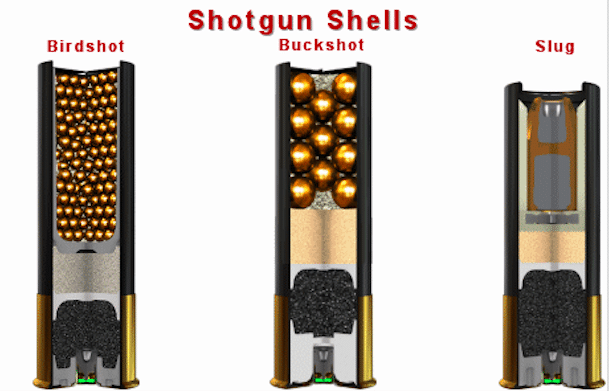
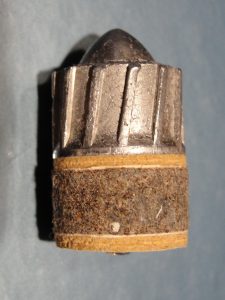
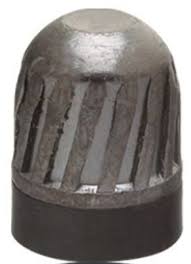
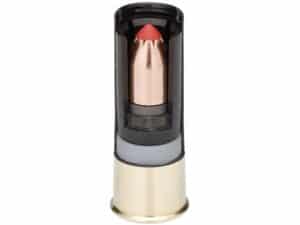

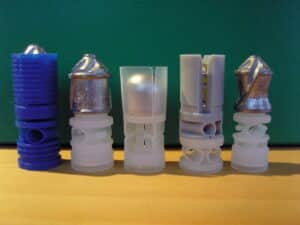










21 Responses
Shotgun type: Shotgun 2 3/4, 12 gauge smooth bore.
1.What is best shotgun ammo for home defense?
2.Can the same type of shell be used to hunt small game?
3.What ammo would you suggest for hunting deer?
Thanks
IF A 3″ SHELL FITS COMFORTABLY IN MY OLD HARRINGTON-RICHARDSON 410 SINGLE SHOT AM I SAFE TO SAY IT IS IN FACT A 3″ GUN?
MADE IN USA 410 GAUGE CHOKE is on top of barrel
Nice piece. Thanks. I found your site while researching my Red Letter Winchester. Sure wish I could find a pic of the original pig tail lever they talk about on these.
I had no idea they made Slugs for Shot guns. Would you add me to your list please? Id like to read more.
Send your email to chris@gunnewsdaily.com and I will try and get your email added.
There was nothing said about these 2 terms, that I think I know now, but have not been able to confirm.:
1) Super-Magnum = 3½” length
2) Magnum = 2¾” and 3″ length, or is it just 3″ length?
If just 3″ length means Magnum, does 2¾” have its own name?
And P.S. Your site will not accept my Email address, which is my own company domain. I hate using Google’s Gmail or having anything at all to do with Google.
Updated. Thanks.
You say “A shotgun shell is cased in plastic with a brass base containing the firing pin.” ERROR = Not the firing pin (apt of the gun) but the Primer! (part of the shell).
Some other things oddish but I’m not going to bother….
what would be the best load to use in a 1894 Remington side by side shot gun. Thank you
Good article, the only thing that I would have to say on this is that the high and low brass does matter… kind of. I have a Tristar O/U and it seems that the low brass shells jam up when closing the barrel but I have no issues with the high brass shells. The high brass shells actually sit in the barrel when the extractor is all the way extended but there is a gap with the low brass shells which seems to catch the edge of the barrel when closing.
All is explained very well. I am a first time shotgun owner and we spend a lot of time on bush trails. What type of shell would u suggest for a 12g for predators. I walk with two kids so something that will hurt the animal enough that it will want to bigger off as fast as it came. I usually take my 308 but can only work a bolt so fast.
is it true you can fire a .410 cartridge in a .45 revolver
Very clear general description of the stuff! Thank you!
So the brass base contains the firing pin? If we cannot distinguish between a firearm part and a primer, part of a shotshell, why trust any of this?
Very informative…
Great piece!
Correct C.C.
The pig tail style release lever was used in the Winchester model 37 shotguns made throughout its introduction year of 1936 and was then replaced in 1937 with a solid lever though a very few early 1937 shotguns still had them until the factory parts inventory was used up.
If you do an online search for “Winchester model 37 pig tail lever” you’ll find a number of photos of them.
I have a 1936 Winchester model 37 with the pig tail lever and remnants of the red paint Winchester used to highlight the lettering on the action.
It’s a beauty and still functions perfectly.
I enjoyed your article tremendously. Don’t mean to pick any nits, but:
1. The ‘rifling on Brenneke & Forster-style slugs is not there to provide rotation, it is there to ensure that the slug will be stabilized in the barrel during its travel, but can safely make it out of a choked barrel. Rotational effects, if any, would be minimal at best, as these slugs rely on the weight forward (shuttlecock effect) to stabilize them in flight.
2. After pointing them out, with a pic even, you completely ignored the Buckshot loads. In some localities a required big-game hunting load.
Actually the ribs on the sides of the Brenneke and Forster style slugs do cause them to spin after they leave the barrel and help with stability. We have shot high speed video of this to show their rotation.